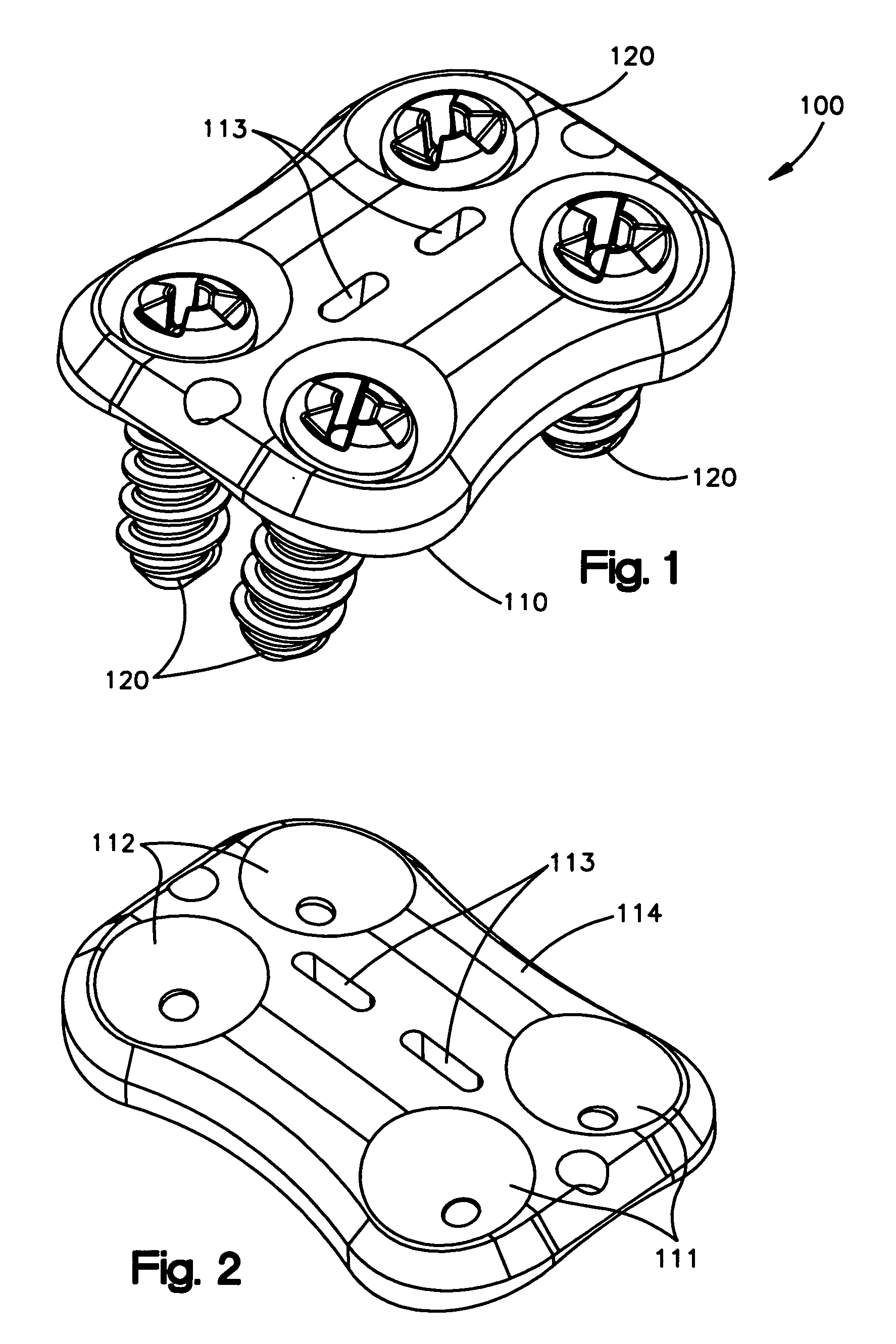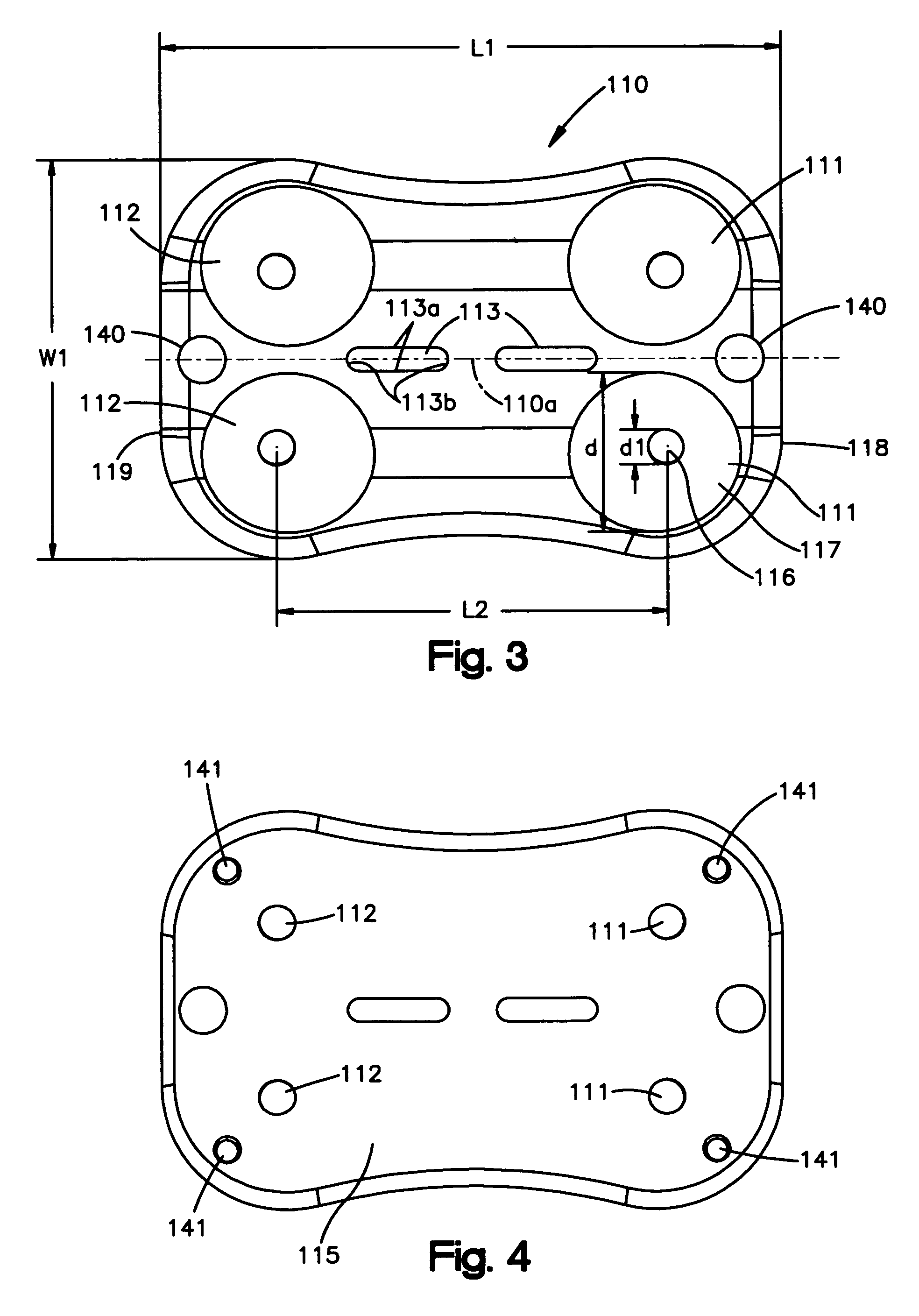Resorbable anterior cervical plating system with screw retention mechanism
a technology of fixing mechanism and anterior cervical plate, which is applied in the field of bone stabilization or fixation assembly, can solve the problems of insufficient mechanical strength or holding force, dislodge or backout of fasteners, and device remains in the body or is surgically removed, so as to maintain compressive load on the graft and promote fusion
- Summary
- Abstract
- Description
- Claims
- Application Information
AI Technical Summary
Benefits of technology
Problems solved by technology
Method used
Image
Examples
Embodiment Construction
[0038] A preferred embodiment of a bone plate assembly 100 (also referred to as a bone fixation assembly or bone stabilization assembly) is depicted in FIG. 1, and includes a bone plate 110 and fasteners 120. The bone plate assembly is preferably for use in the human spine, preferably in the cervical and / or lumbar regions. The bone plate assembly may be attached, for example, to two or more adjoining vertebrae and functions to prevent graft extrusion / expulsion. With proper strength of the bone plate, the bone plate assembly may also provide stability for alignment and maintaining adjacent vertebrae in a predetermined spatial relationship to each other. The bone plate assembly may be used for other regions other than the spine, such as for example, long bones.
[0039] Bone plate 10 (FIGS. 2-6) includes an upper side 114 (FIG. 3) and an underside or lower side 115 (FIG. 4) with fixation holes extending from the upper side 114 to the underside 115. The underside 115 may be curved transv...
PUM
 Login to View More
Login to View More Abstract
Description
Claims
Application Information
 Login to View More
Login to View More - R&D
- Intellectual Property
- Life Sciences
- Materials
- Tech Scout
- Unparalleled Data Quality
- Higher Quality Content
- 60% Fewer Hallucinations
Browse by: Latest US Patents, China's latest patents, Technical Efficacy Thesaurus, Application Domain, Technology Topic, Popular Technical Reports.
© 2025 PatSnap. All rights reserved.Legal|Privacy policy|Modern Slavery Act Transparency Statement|Sitemap|About US| Contact US: help@patsnap.com



